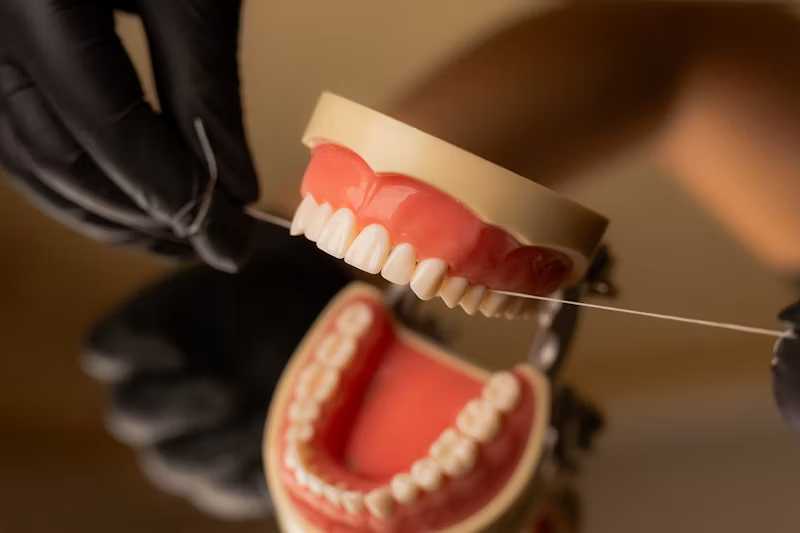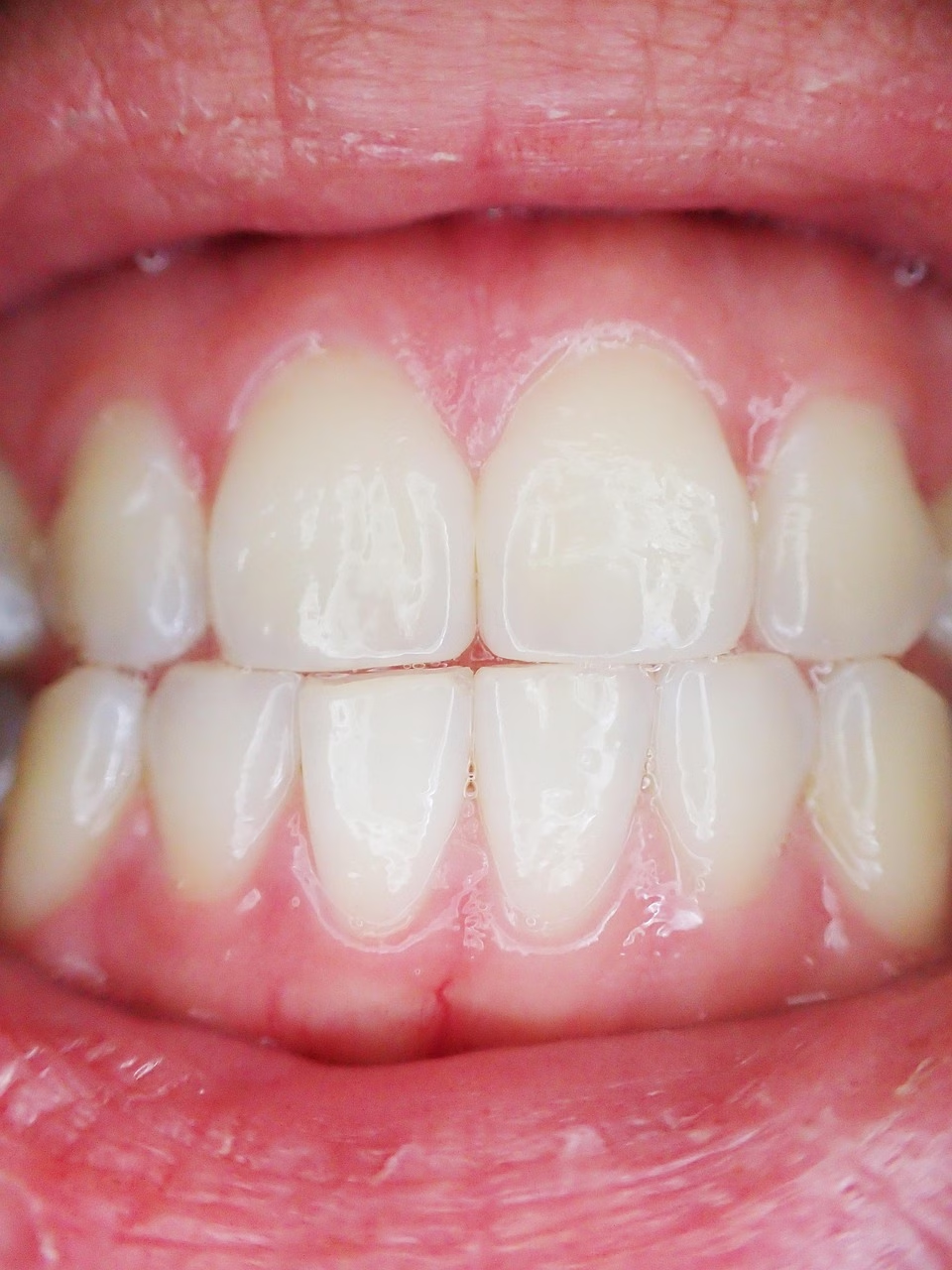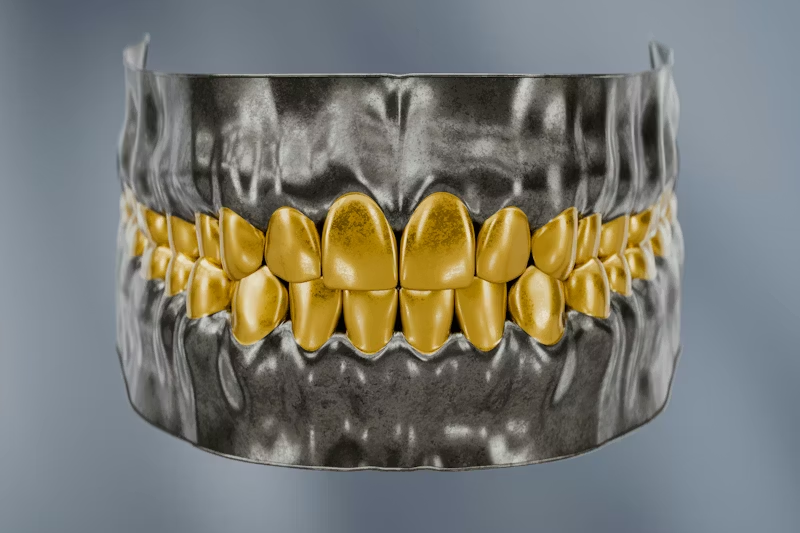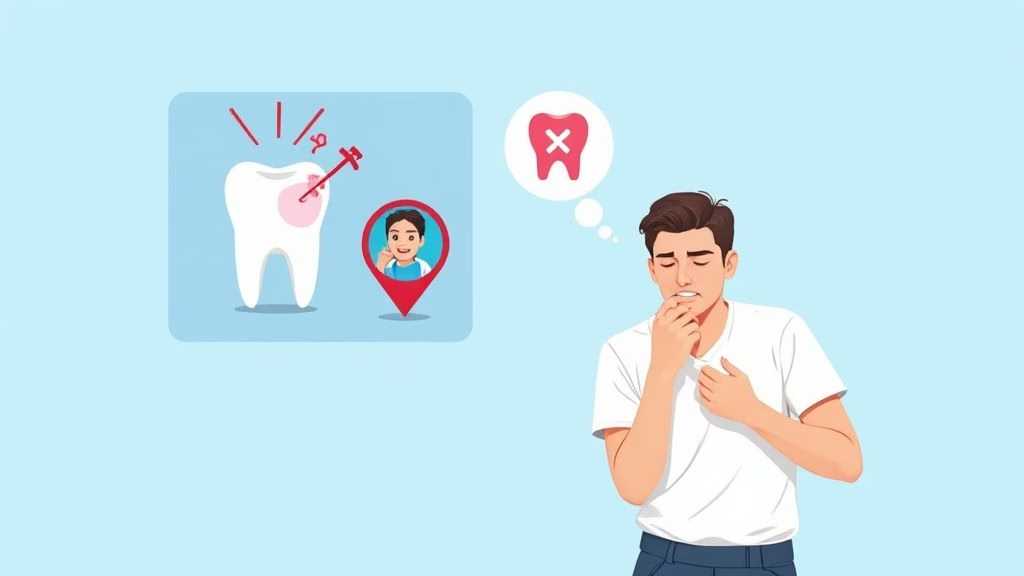Transform Your Smile: A Complete Guide to Transparent Teeth Aligners

The Evolution of Modern Orthodontic Treatment
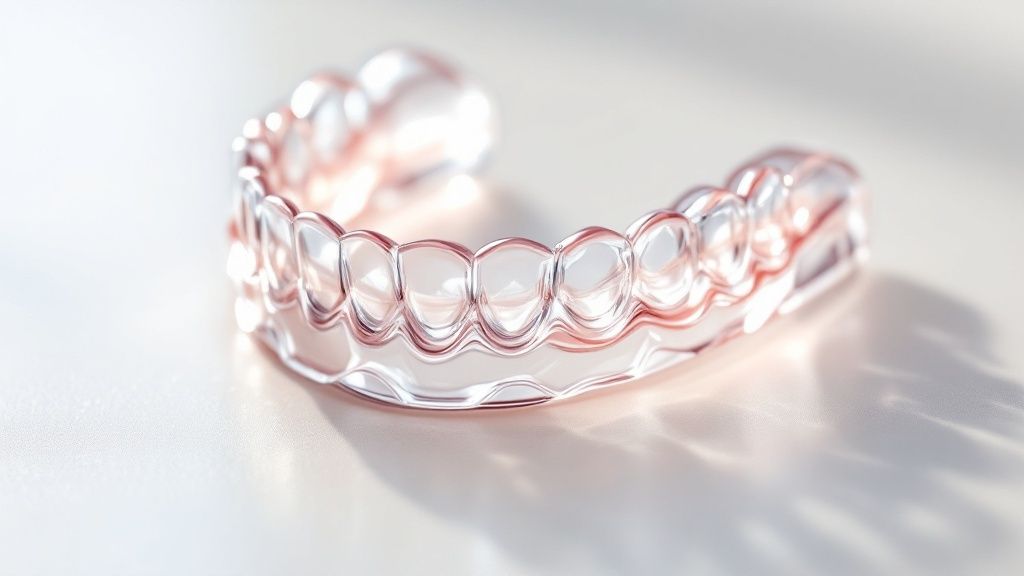
Metal braces were once the standard in orthodontic care. Today, however, orthodontic treatments have taken a new direction with the emergence of transparent teeth aligners – a development driven by patient demand for more discreet and comfortable options. This shift goes beyond just aesthetics, representing a fundamental change in teeth straightening approaches.
From Metal to Clear: A Welcome Change
Traditional metal braces, while they worked well, came with notable downsides. Many patients struggled with discomfort, food limitations, and feeling self-conscious about their appearance. These challenges sparked interest in finding better alternatives. Clear aligners emerged as the answer, offering a much more comfortable and patient-friendly way to achieve straight teeth.
The Rise of Transparent Teeth Aligners
When transparent teeth aligners first appeared, they changed orthodontic care forever. Made from clear, biocompatible plastic, these aligners are nearly invisible when worn. This feature has made them especially popular among adults and teens who want to straighten their teeth without drawing attention. The success story started in 1999 when Align Technology introduced the first clear aligners. By 2018, 5 million people had used this treatment. The numbers grew impressively to 10.9 million by 2020 and reached 17 million by 2023, including 4.5 million teenagers. These growing numbers show just how effective and widely accepted clear aligners have become. For more detailed information, check out Consumer Affairs’ statistics on invisible braces.
Ongoing Advancements and the Future of Orthodontics
Clear aligner technology keeps getting better. New developments in materials science, 3D printing, and treatment planning software are making aligners more effective for a wider range of dental issues. This means that patients with more complex orthodontic needs can now benefit from this treatment option. As research continues, orthodontic care is becoming more precise and personalized than ever.
Understanding the Science Behind Transparent Teeth Aligners
The success of transparent teeth aligners comes from careful engineering and deep scientific understanding. These aren’t simple plastic trays – they are precision tools designed to gradually shift teeth into proper alignment. By combining material science and biomechanics, these aligners can effectively guide tooth movement while keeping patients comfortable.
The Role of Biomechanics
The movement of teeth with aligners relies on biomechanics – the study of forces acting on living tissue. Each aligner applies specific, gentle pressure to targeted teeth. This consistent force stimulates the surrounding bone to naturally reshape itself, allowing teeth to shift position. The precise control of these forces is what makes the treatment both comfortable and effective for patients.
Advanced 3D Imaging and Treatment Planning
Creating custom aligners starts with detailed 3D scans of the patient’s teeth and jaw. These high-resolution images give orthodontists the full picture needed to plan exact tooth movements throughout treatment. The digital models let doctors map out each step and predict how teeth will respond to the aligner forces, so they can fine-tune the treatment plan as needed.
Biocompatible Materials: The Foundation of Comfort and Effectiveness
The aligners use special biocompatible materials that are safe for long-term wear in the mouth. These materials strike an important balance – they’re strong enough to move teeth but flexible enough for comfort. Getting this combination right is essential for the aligners to work properly without irritating sensitive oral tissues.
The Importance of Consistent Wear
For aligners to work properly, patients need to wear them 20-22 hours every day. This keeps steady pressure on the teeth so the bone can reshape and teeth can shift as planned. Taking aligners out too often or for too long disrupts this process and can delay results. Patient commitment to wearing aligners consistently is one of the biggest factors in treatment success.
The Future of Aligners and AI
AI technology is opening new possibilities for aligner treatment. AI analysis of patient data could help create more precise treatment plans and potentially shorter treatment times. These advances may make transparent aligners an even more appealing choice for patients who want straighter teeth.
Maximizing Benefits While Understanding Limitations
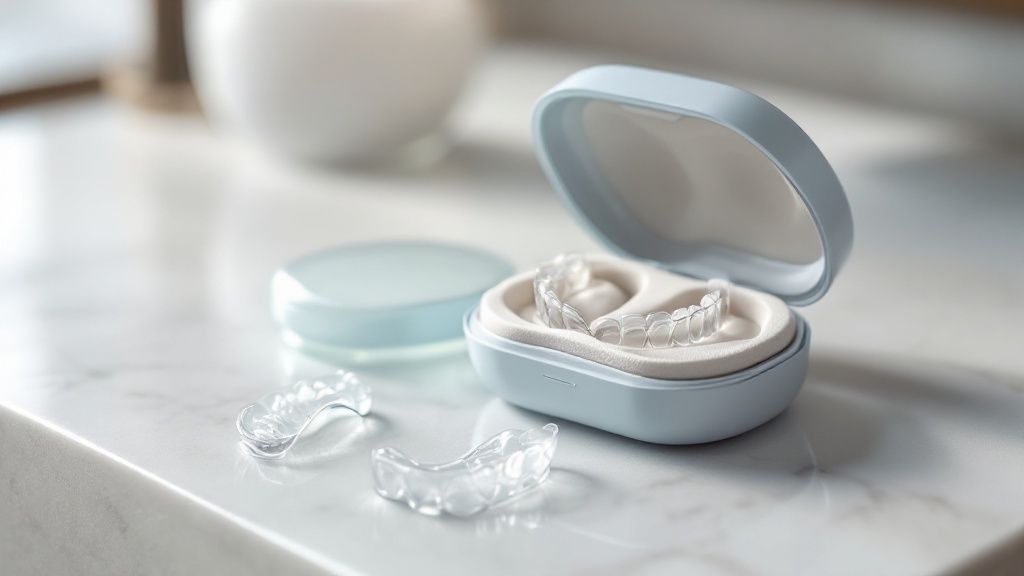
Making the right choice for your orthodontic care requires carefully weighing the advantages and limitations of different treatment options. Clear aligners, including those from Toothfairy, offer an appealing alternative to traditional braces – but it’s important to understand exactly where they excel and where other approaches might work better.
Ideal Candidates for Transparent Teeth Aligners
Clear aligners work best for specific types of orthodontic needs. They show excellent results for:
- Crowding and Spacing: Minor to moderate gaps between teeth or overlapping teeth
- Mild Bite Issues: Small overbites or underbites that need correction
- Previous Treatment Touch-ups: Fixing teeth that have shifted after earlier orthodontic work
These characteristics make clear aligners especially well-suited for adults and teens who want a subtle treatment option that fits their lifestyle.
When Traditional Braces Might Be Necessary
While clear aligners are effective for many cases, some dental issues respond better to traditional braces:
- Major Bite Problems: Significant misalignment of the jaw or serious bite irregularities
- Severely Rotated Teeth: Teeth that need substantial repositioning
- Teeth Below the Gumline: Cases where teeth haven’t fully emerged
This highlights why a thorough evaluation by an orthodontist is so important – they can determine which approach will give you the best results.
Managing Expectations and Achieving Realistic Outcomes
Success with clear aligners depends heavily on patient commitment. You’ll need to wear them for 20-22 hours each day to stay on track with your treatment plan. Good oral hygiene habits are also essential for the best results.
Comparing Treatment Outcomes: Aligners vs. Braces
| Feature | Transparent Teeth Aligners | Traditional Braces |
|---|---|---|
| Appearance | Nearly invisible | Metal brackets and wires visible |
| Comfort | Smoother, less irritation | May cause some mouth discomfort |
| Oral Hygiene | Remove to brush and floss normally | Requires special cleaning techniques |
| Treatment Time | Similar to braces for simpler cases | Varies based on complexity |
| Best For | Mild to moderate alignment needs | Wide range of orthodontic issues |
This side-by-side look shows how each option has distinct advantages. For personalized advice about which treatment fits your needs, schedule a consultation with a qualified orthodontist at Toothfairy. They’ll help create a treatment plan that matches your goals for a healthier, more aligned smile.
Navigating Your Treatment Journey
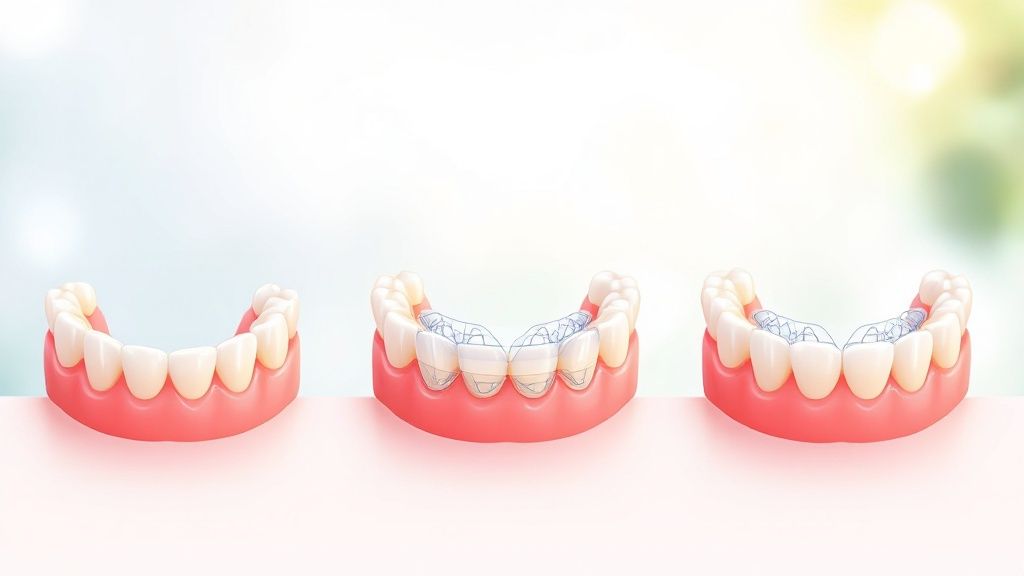
Getting started with clear teeth aligners involves several important steps, from your first appointment through to maintaining your improved smile. Here’s what you can expect during your treatment with Toothfairy aligners.
The Initial Consultation: Your First Step Towards a Straighter Smile
Your first appointment sets the foundation for successful treatment. During this visit, your orthodontist will examine your teeth, understand your goals, and determine if clear aligners are right for you. They’ll walk you through the process and create a treatment plan specifically for your needs.
Creating Your Custom Aligners: Precision and Technology Combined
The next phase involves taking detailed 3D scans or impressions of your teeth. These images help design a series of custom aligners that will gradually move your teeth into their ideal positions. Each aligner is carefully crafted to achieve specific tooth movements at each stage.
Wearing Your Aligners: Consistency Is Key
You’ll receive sets of aligners to wear for about two weeks each. For best results, wear them for 20-22 hours daily, removing them only to eat, drink, and clean your teeth. This schedule allows for normal daily activities while ensuring steady progress.
Follow-Up Appointments: Monitoring Progress and Making Adjustments
Regular checkups with your orthodontist help ensure your treatment stays on track. These visits allow them to check your progress, address any concerns, and provide new sets of aligners as needed. Think of these appointments as progress markers on your journey to a straighter smile.
Maintaining Your New Smile: Retainers and Long-Term Care
After completing your aligner treatment, you’ll transition to wearing a retainer. This crucial step helps keep your teeth in their new positions. Good oral hygiene and consistent retainer use will help preserve your results for years to come.
Living with Aligners: Tips for a Smooth Treatment Experience
- Oral Hygiene: Brush and floss after meals before putting aligners back in
- Cleaning Your Aligners: Use a soft toothbrush and lukewarm water daily – avoid hot water that could warp them
- Managing Discomfort: Take over-the-counter pain relief if needed for initial soreness
- Staying Hydrated: Drink plenty of water throughout the day
- Traveling with Aligners: Always carry your aligner case when on the go
By following these guidelines and working closely with your orthodontist, you can achieve the smile you’ve always wanted. Ready to start your journey? Contact Toothfairy to learn how their proven approach can help transform your smile with clear aligners.
Making Smart Financial Decisions
Planning for transparent teeth aligners requires careful consideration of both health and financial factors. Understanding the complete costs and available payment options helps you make informed choices without surprises. Let’s explore the key financial aspects you need to know.
Understanding the Cost of Transparent Teeth Aligners
The cost of transparent teeth aligners through providers like Toothfairy depends on your specific needs. Key factors include treatment complexity and duration. Most treatments range from £1,500 to £5,000. A personal consultation gives you the most accurate estimate based on your unique case.
Maximizing Your Insurance Benefits
Many dental insurance plans include coverage for orthodontic treatments like clear aligners. Review your policy details to understand coverage percentages and lifetime limits. Knowing exactly what your insurance covers helps you plan for any remaining costs you’ll need to handle directly.
Exploring Payment and Financing Options
Several approaches can make treatment costs more manageable:
- Flexible Spending Accounts (FSAs) and Health Savings Accounts (HSAs): Use pre-tax dollars from these accounts to pay for treatment, reducing your taxable income while making aligners more affordable.
- Third-Party Financing: Medical financing companies offer specific loans for dental treatments, often with competitive rates and manageable monthly payments.
Many providers, including Toothfairy, also offer payment plans that spread costs over several months, making it easier to fit treatment into your monthly budget.
Assessing the Long-Term Value
While the upfront cost may seem significant, consider the lasting benefits of straight teeth. Proper alignment helps maintain better oral health, which can mean fewer dental problems and expenses down the road. Clear aligners offer comfort and discretion that traditional braces can’t match – important factors when weighing your options.
By understanding your financial choices and planning carefully, you can achieve the smile you want while protecting your financial wellbeing. Ready to learn more? Contact Toothfairy to schedule a consultation and discuss payment options that work for your budget.
Achieving Optimal Results: Expert Strategies
Getting the best results from clear aligners takes more than just wearing them – it requires following key best practices consistently. Let’s explore proven strategies from orthodontists and experienced patients that will help you get the smile you want.
Mastering Consistent Wear: The Foundation of Success
The most important factor is wearing your aligners consistently. You should aim for 20-22 hours of daily wear to allow for steady tooth movement. Think of it as a part-time commitment for your smile. Taking aligners out too often disrupts the process – for example, wearing them for less than recommended time can mean your teeth don’t shift as planned, leading to longer treatment.
Maintaining Oral Hygiene: A Critical Component
Keeping your teeth clean is essential during aligner treatment. Food and bacteria can get trapped between aligners and teeth, increasing cavity and gum problems. This means brushing and flossing thoroughly after meals before putting aligners back in. Using a fluoride rinse provides extra protection for your teeth during treatment.
Addressing Potential Issues Proactively
While aligners are generally comfortable, you may feel some discomfort when starting a new set. This temporary feeling means they’re working. Over-the-counter pain medicine can help with soreness. For any ongoing pain, check with your orthodontist promptly. Quick attention to issues keeps your treatment on track.
Integrating Aligner Care into Daily Life
Make aligner care part of your daily routine for best results. Always keep your case with you for safe storage during meals. Clean your aligners daily using a soft toothbrush and lukewarm water – never hot water since it can warp them. These simple habits help maintain your aligners’ effectiveness throughout treatment.
Staying on Track and Maintaining Momentum
Regular checkups let your orthodontist monitor progress, give you new aligners, and address any concerns. Use these visits to discuss challenges and get personalized advice. Staying engaged in your treatment helps ensure you achieve the aligned smile you want.
Ready to transform your smile with clear aligners? Start your journey with Toothfairy today!
Last updated on February 3, 2025

Dr. Deepak
ToothFairy Care Team.
Dr. Deepak
ToothFairy Care Team.

